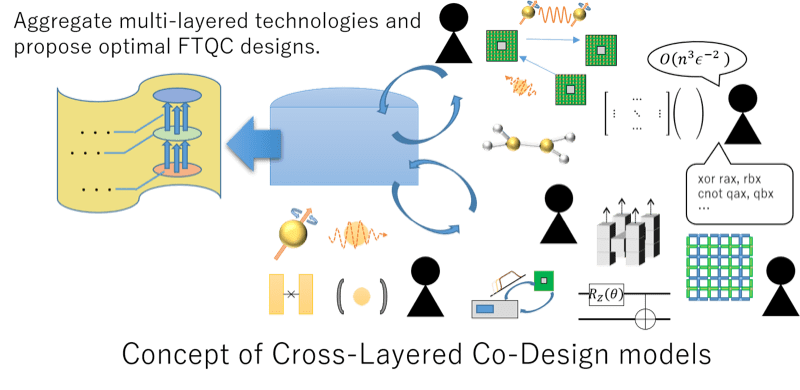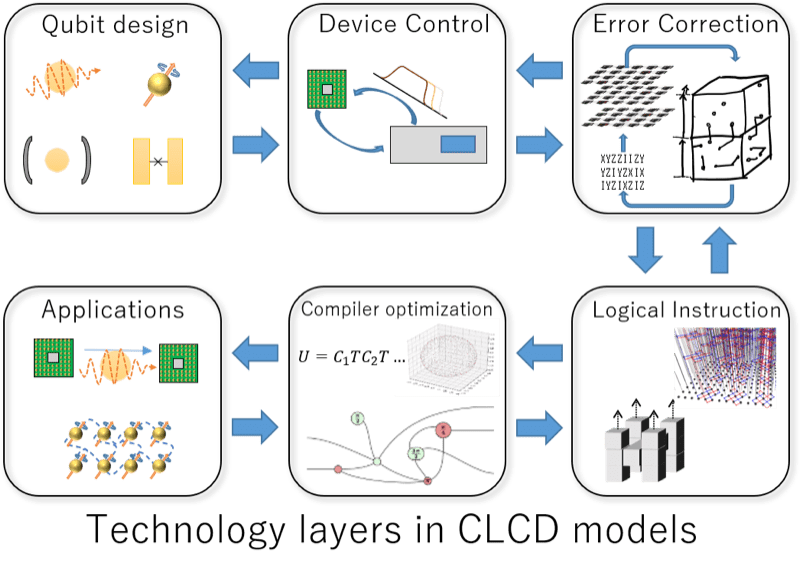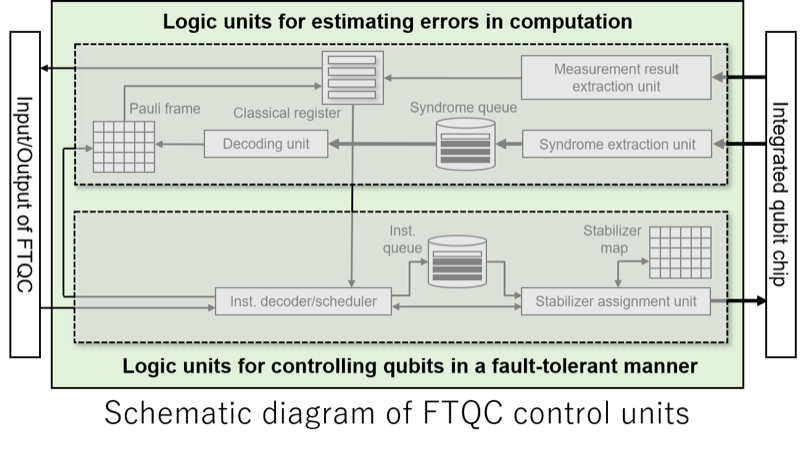Progress Report
Research and Development of Theory and Software for Fault-tolerant Quantum Computers[1] Development and expansion of cross-layer codesign models
Progress until FY2024
1. Outline of the project
Under this theme, we aim to construct a full-stack framework that enables the efficient and flexible design of fault-tolerant quantum computing (FTQC). While massive software stacks have been developed to optimize and evaluate existing computing, there are no quantum counterparts for this purpose. This makes it difficult to quantitatively plan long-term goals for development. To resolve this issue, we will construct a software foundation to enable co-design beyond multiple technology layers, named “cross-layer codesign (CLCD) models.” With this software, we show optimized FTQC designs and contribute to the long-term planning for FTQC R&D.

We develop CLCD models with the following steps. First, we list all the components of FTQC in each technological layer without considering their feasibility. We named this mockup as a minimal model. Then, we resolve problems found in minimal models by relaxing the requirement by optimizing designs or proposing architectures. According to these results, we update minimal models and design sophisticated FTQC based on them.

2. Outcome so far
Our contributions can be summarized in the following three points. First, we proposed a minimal model for FTQCs. Focusing on FTQCs with superconducting qubits and surface codes, we designed all the relevant components in detail and quantitatively evaluated the system requirements to demonstrate quantum advantage. Second, we extended this minimum model to other qubit devices and identified engineering problems to satisfy the system requirements. Finally, we proposed scalable quantum computer systems for each qubit device. We proposed methods to resolve issues in scaling quantum systems, such as temporal and spatial variations in error characteristics. Also, we proposed compiler optimization techniques and efficient instruction-set architectures to relax the demands for quantum advantage. Our cross-layer designs encouraged deep collaborations across multiple fields, such as computer architecture, circuit design, and quantum physics, and our results were achieved based on these collaborations.

3. Future plans
We continue to design and develop FTQC through deep collaborations spanning from fundamental theory to practical applications. To accelerate the realization of quantum advantage, we translate our theories into concrete software and systems and implement CLCD models that enable flexible design and optimization of FTQCs.